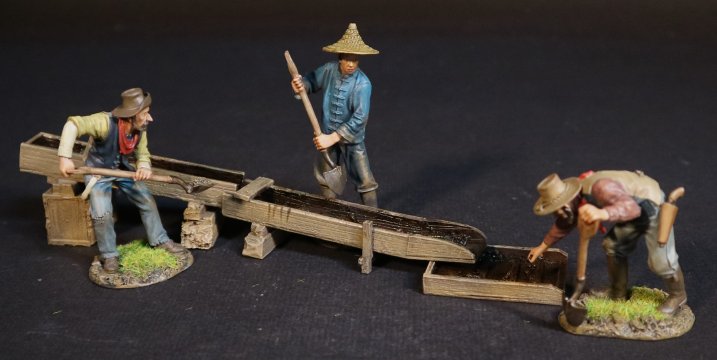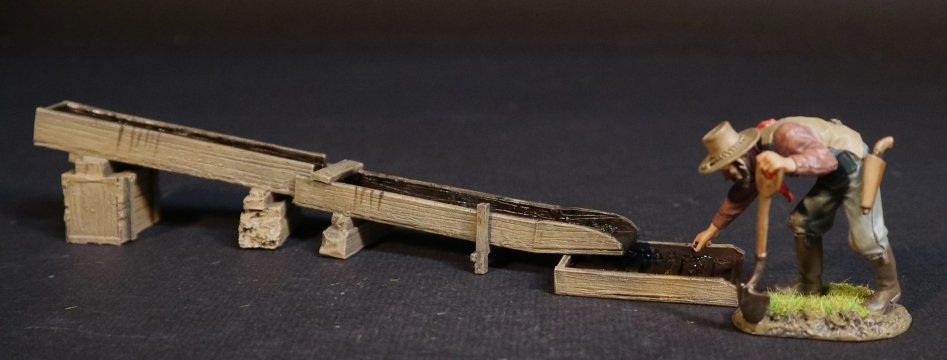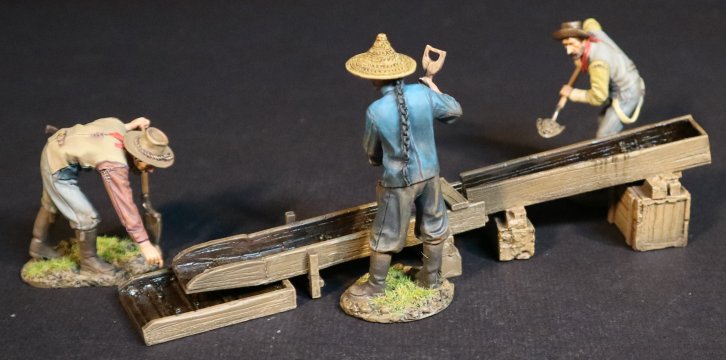- Joined
- Feb 2, 2011
- Messages
- 2,339
THE GOLD RUSH

A gold rush or gold fever is a discovery of gold that brings an onrush of miners seeking their fortune.
Major gold rushes took place in the 19th century in the United States, Canada, Australia, Greece, New Zealand, Brazil, Chile, and South Africa

Gold rushes were typically marked by a general buoyant feeling of a “free for all”, in which any single individual might become abundantly wealthy almost instantly, as expressed in the California Dream!
Gold rushes helped spur waves of immigration that often led to the permanent settlement of new regions. Activities propelled by gold rushes define significant aspects of the culture of the Australian and North American frontiers.
At a time when the world’s money supply was based on gold, the newly mined gold provided economic stimulus far beyond the goldfields, feeding into local and wider economic booms.
The California Gold Rush of 1848-1855 in the Sierra Nevada captured the popular imagination, and led to an influx of gold miners, which led to California’s rapid industrialization, as businesses sprung up to serve the increased population and financial institutions to handle the increased wealth.
One of these political institutions was statehood; the need for new laws in a sparsely governed land led to the state’s rapid entry into the Union in 1850.
Various gold rushes occurred in Australia over the second half of the 19th Century. The most significant of these although not the only ones, were the New South Wales gold rush and Victorian gold rush in 1851, and the Western Australia gold rushes of the 1890’s.

WSP-128A
THE GOLD RUSH,
“THE LONG TOM” PART 1
These were highly significant to their respective colonies political and economic development as they brought many immigrants, and promoted massive government spending on infrastructure to support the new arrivals who came looking for gold.
While some found their fortune, those who did not often remained in the colonies and took advantage of extremely liberal land laws to take up farming.
One of the last “great gold rushes” was the Klondike gold rush in the Yukon Territory in 1896 – 1899. This gold rush is featured in the novels of Jack London, and in Charlie Chaplin’s film “The Gold Rush”.
The main goldfield was along the south flank of the Klondike River near its confluence with the Yukon River, close to what was to become Dawson city in the Yukon Territory. It also helped to open up the relatively new US possession of Alaska to exploration and settlement, and promoted the discovery of other gold finds.
THE LONG TOM
A ‘Long Tom” is a method used for small scale mining that is far more efficient than either the gold pan or the rocker.
The “Long Tom” was originally used by the “Forty Niners” in late 1848 just when the gold rush was just getting underway.
By 1850 it was in common use in the goldfields, and coupled with a hydraulic nozzle it created such environmental damage it was shortly outlawed. This was probably one of the earliest environmental laws in America.
A Long Tom usually has a greater capacity than a rocker and does not require the labour of rocking.
It consists essentially of a short receiving launder, and open washing box 6 to 12 foot long with the lower end a perforated plate or a screen set at an angle, and finally a short sluice with riffles.
The material is fed into the upper box, and then washed through with water. An operator breaks up the material, removing boulders and works the material through the screen.
Coarse gold settles in the upper box and finer gold in the lower.

Contact your Dealer to Pre-Order today!

A gold rush or gold fever is a discovery of gold that brings an onrush of miners seeking their fortune.
Major gold rushes took place in the 19th century in the United States, Canada, Australia, Greece, New Zealand, Brazil, Chile, and South Africa

Gold rushes were typically marked by a general buoyant feeling of a “free for all”, in which any single individual might become abundantly wealthy almost instantly, as expressed in the California Dream!
Gold rushes helped spur waves of immigration that often led to the permanent settlement of new regions. Activities propelled by gold rushes define significant aspects of the culture of the Australian and North American frontiers.
At a time when the world’s money supply was based on gold, the newly mined gold provided economic stimulus far beyond the goldfields, feeding into local and wider economic booms.
The California Gold Rush of 1848-1855 in the Sierra Nevada captured the popular imagination, and led to an influx of gold miners, which led to California’s rapid industrialization, as businesses sprung up to serve the increased population and financial institutions to handle the increased wealth.
One of these political institutions was statehood; the need for new laws in a sparsely governed land led to the state’s rapid entry into the Union in 1850.
Various gold rushes occurred in Australia over the second half of the 19th Century. The most significant of these although not the only ones, were the New South Wales gold rush and Victorian gold rush in 1851, and the Western Australia gold rushes of the 1890’s.

WSP-128A
THE GOLD RUSH,
“THE LONG TOM” PART 1
These were highly significant to their respective colonies political and economic development as they brought many immigrants, and promoted massive government spending on infrastructure to support the new arrivals who came looking for gold.
While some found their fortune, those who did not often remained in the colonies and took advantage of extremely liberal land laws to take up farming.
One of the last “great gold rushes” was the Klondike gold rush in the Yukon Territory in 1896 – 1899. This gold rush is featured in the novels of Jack London, and in Charlie Chaplin’s film “The Gold Rush”.
The main goldfield was along the south flank of the Klondike River near its confluence with the Yukon River, close to what was to become Dawson city in the Yukon Territory. It also helped to open up the relatively new US possession of Alaska to exploration and settlement, and promoted the discovery of other gold finds.
THE LONG TOM
A ‘Long Tom” is a method used for small scale mining that is far more efficient than either the gold pan or the rocker.
The “Long Tom” was originally used by the “Forty Niners” in late 1848 just when the gold rush was just getting underway.
By 1850 it was in common use in the goldfields, and coupled with a hydraulic nozzle it created such environmental damage it was shortly outlawed. This was probably one of the earliest environmental laws in America.
A Long Tom usually has a greater capacity than a rocker and does not require the labour of rocking.
It consists essentially of a short receiving launder, and open washing box 6 to 12 foot long with the lower end a perforated plate or a screen set at an angle, and finally a short sluice with riffles.
The material is fed into the upper box, and then washed through with water. An operator breaks up the material, removing boulders and works the material through the screen.
Coarse gold settles in the upper box and finer gold in the lower.

Contact your Dealer to Pre-Order today!

